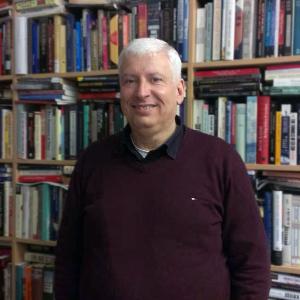When a world collapsed
6 Sept 2021
20 years after Nine Eleven, the images are still present, the consequences still palpable. Two LMU Americanists talk about the legacy of a day that shook not only the USA.
6 Sept 2021
20 years after Nine Eleven, the images are still present, the consequences still palpable. Two LMU Americanists talk about the legacy of a day that shook not only the USA.
Nine, Eleven. Even twenty years later, it only takes two numbers to conjure up the images again. Of glowing steel plunging into the depths, fire engines rushing in from all parts of the city and billows of smoke drifting over the forever changed New York skyline.
But how did the attacks on the World Trade Center and the Pentagon on 11 September 2001 change the USA as a nation and society? In two interviews, LMU American studies professors Christof Mauch and Michael Hochgeschwender talk about the cultural, domestic and foreign policy consequences of a national trauma.

© Martin Hangen
LMU’s Professor Christof Mauch, a specialist in American Studies, was in Washington D.C. on 11 September 2001. In this interview, he recalls his personal experiences on the day, and reflects on how American society reacted to a national trauma.
Now, when 9/11 is mentioned, it is often followed by the words “national trauma”. Is that how you see it?
Christof Mauch: Yes. What happened on 9/11 provoked a textbook trauma. It was a shocking blow to America’s self-awareness, in many respects worse than that caused by any comparable event. The US has suffered its fair share of trauma in the course of its history. In the Civil War in the 19th century, Americans had fought other Americans, and ravaged the country from within. One hundred years later came the defeat in Vietnam, and the American people could not comprehend how they could have lost such a war, despite many losses and in light of their military superiority.
What made 9/11 so different?
Christof Mauch: America itself was targeted – and that had happened only once before, at Pearl Harbor in 1941. In that case, the aggressor, Japan, was itself a formidable power, but one could retaliate militarily. On 9/11, the perpetrators of the attacks were still unknown. So the US could not declare war on them and punish them by bombing their bases, as in a conventional war. Moreover, the very fact that the attacks had been carried out with relatively unsophisticated resources – with ‘improvised’ weapons – deeply wounded America’s self-image. The terrorists came from one of the poorest countries in the world, and for the American population they were not really on the radar. But they had the US in their sights. – In a sense, they were a more globalized force than America itself. They had assaulted the greatest and proudest economic power on the planet at two highly symbolic points – the World Trade Center and the Department of Defense.

Professor Michael Hochgeschwender is a specialist in American Studies. In the interview he discusses Afghanistan and the after-effects of 9/11 on America’s foreign policy.
Would you agree that President Bush had no other choice but to embark on a war with Afghanistan?
Michael Hochgeschwender: He certainly didn’t have very many options. After such an attack, which was often compared to the Japanese attack on Pearl Harbor, he had to react, and initiating a hunt for Bin Laden would not have sufficed. The big difference relative to Pearl Harbor was that the attack was launched by a non-state actor – a terrorist network.
So the crucial question is whether it was wise to engage in a full-scale war in Afghanistan. Commando operations would also have been possible. In their later attacks on Baghdad during the war in Iraq, the American side obviously felt the need to create the same kind of visual impressions as Al-Qaeda had done. What was at stake was propaganda – a type of cultural warfare that would make the iconography unforgettable.
Were these images designed to act as a deterrent?
Michael Hochgeschwender: Certainly! But the actions themselves were intended as deterrents. The message was “no matter where you hide, we will find you – even in the places where you feel most secure”. This however raises the question whether it is actually possible to deter terrorists. Their central goal is to escalate their acts of terrorism, which are their primary form of communication. Their aim is to strip the mask of civilization from the States that they target.
So the USA was at risk of falling into the trap that the terrorists had set – in particular when the conduct of the wars in Afghanistan and later in Iraq failed to meet the self-proclaimed aspirations, and tended to alienate and terrorize the local population instead.